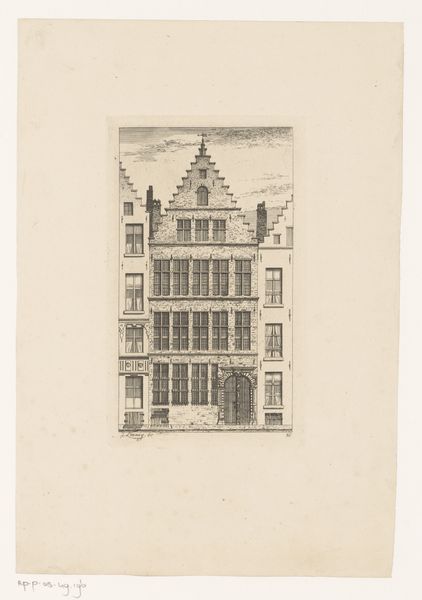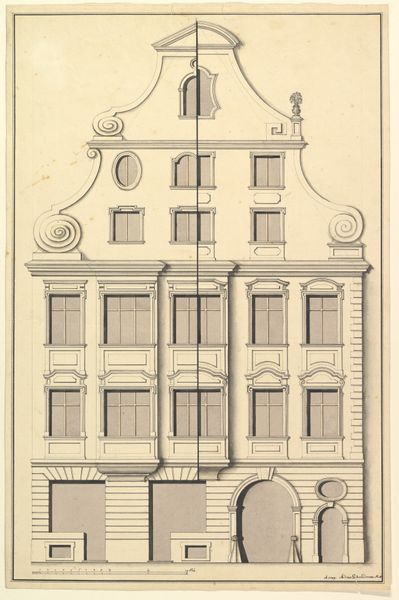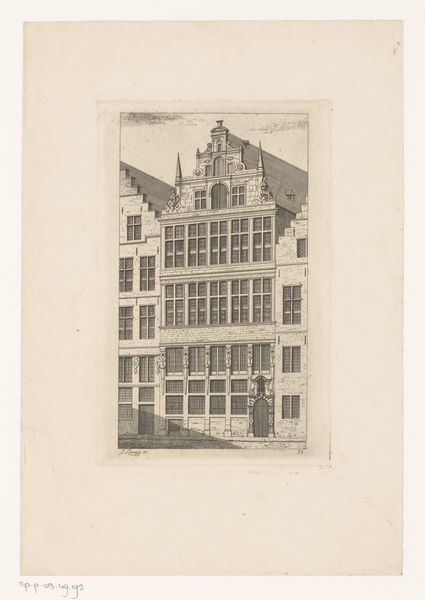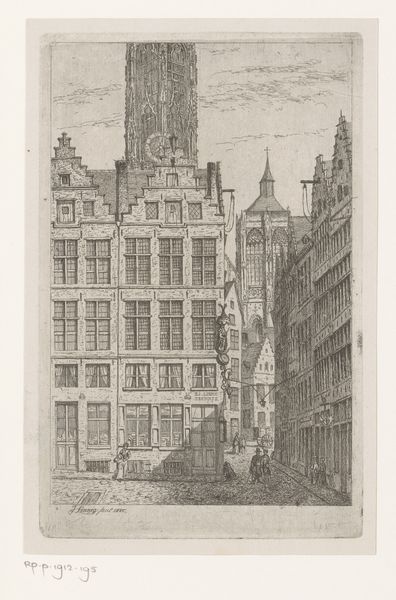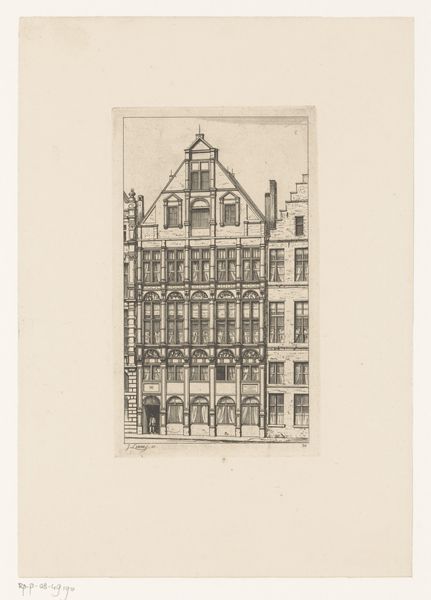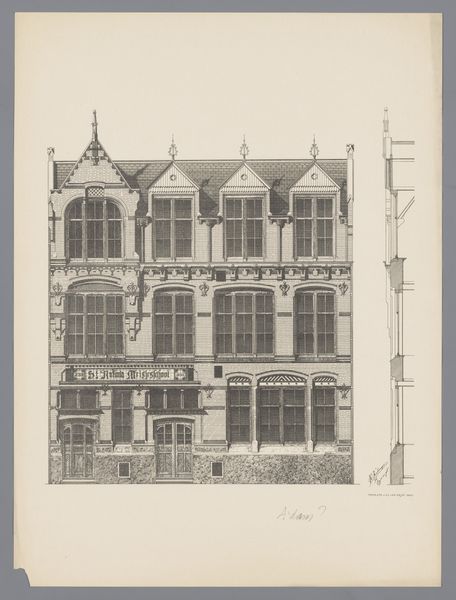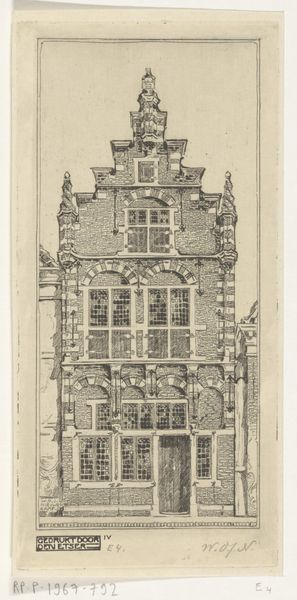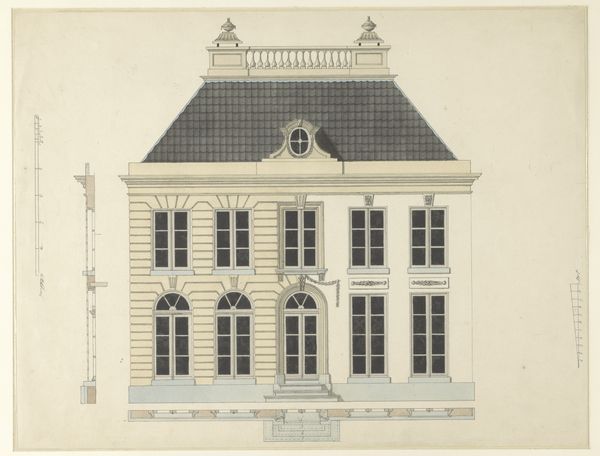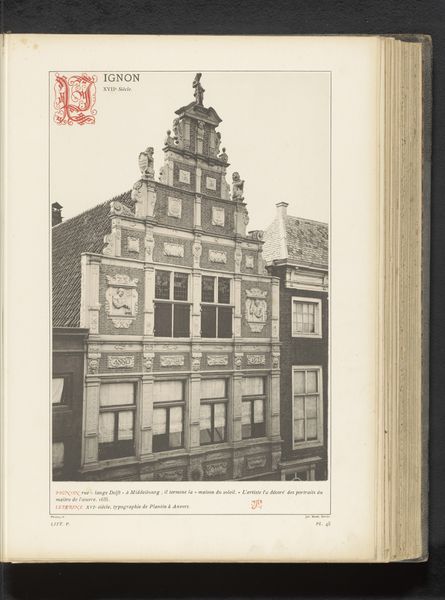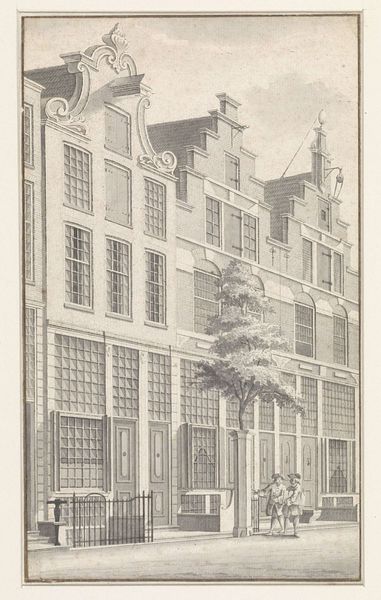
drawing, paper, engraving, architecture
#
drawing
#
baroque
#
old engraving style
#
paper
#
geometric
#
cityscape
#
engraving
#
architecture
Dimensions: height 336 mm, width 215 mm
Copyright: Rijks Museum: Open Domain
Editor: Well, it certainly is…architectural. Rigid, even. So many straight lines, and that pale, parchment-like quality makes it feel very distant, historical. Curator: Indeed. This is an engraving from 1631 depicting "Huis 'De Dolfijn'" – the House 'The Dolphin.' The artist is anonymous, and the piece is an interesting example of Baroque aesthetics rendered on paper using engraving techniques. Editor: Anonymous? Intriguing. I'm drawn to the meticulous rendering of the building's façade, how the engraver captured so many architectural details. Was this meant as a record, perhaps a celebration of burgeoning urban wealth? Curator: Very possibly. We should consider the context of production, how the process of engraving allowed for widespread reproduction and dissemination of images, constructing certain ideals about civic life. The very labor involved – the skilled hand carefully etching lines – speaks to the value placed on craft and accuracy at that time. And remember, the "Dolphin" wasn't just any building; it likely housed merchants integral to the Dutch Golden Age. Editor: That tension between craft and commercialism is quite palpable. The social impact of such engravings seems vital to consider too; what did it mean for civic pride, or how did it function as aspirational imagery? Did it help create and reinforce class distinctions? Curator: Absolutely. The choice of material—paper—allowed for wider accessibility, yet the skill involved in the engraving kept it out of reach for some. Consider the institutional role: this resides at the Rijksmuseum now, transforming its historical function and meaning once again. It prompts a conversation about what it means to safeguard such images and whose story gets prominently told through these institutions. Editor: It makes me reconsider what I initially viewed as "rigid." There is a political charge in celebrating architecture of this nature, reinforcing social power. And for us now to scrutinize it means to investigate this history through the artwork’s lens. Curator: Precisely. Understanding both the materials used and its trajectory sheds new light on the visual. It enriches our understanding of 17th-century Dutch society and how power was meticulously visualized and carefully circulated.
Comments
No comments
Be the first to comment and join the conversation on the ultimate creative platform.

